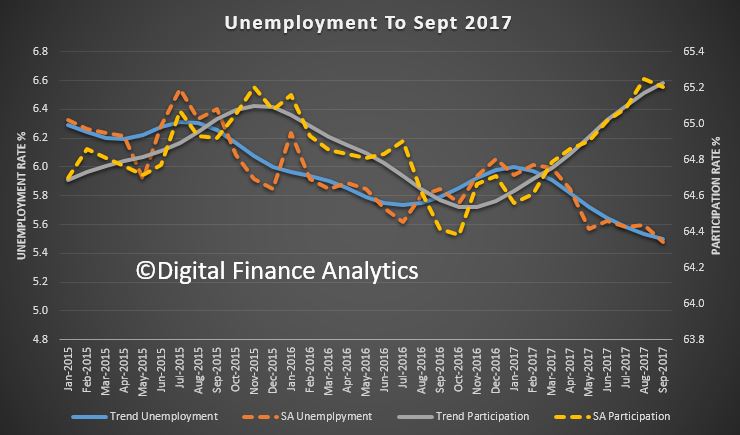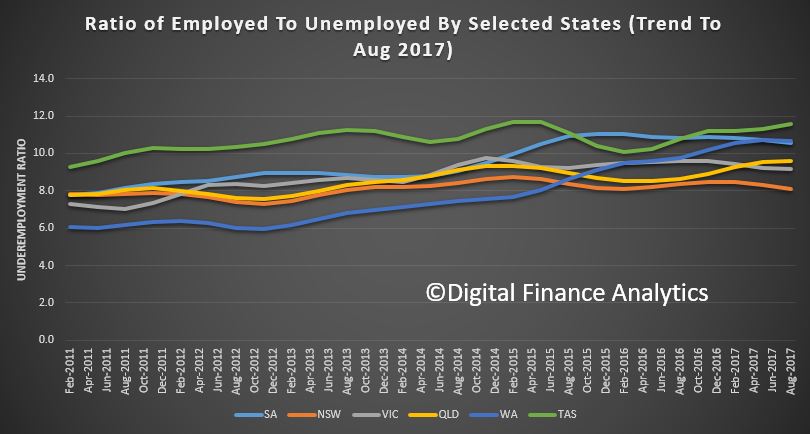The monthly trend unemployment rate has decreased by 0.2 per cent over the past year to 5.5 per cent in September 2017, according to figures released by the Australian Bureau of Statistics (ABS) today. This is the lowest rate seen since March 2013 and reflects the strength in employment growth over the past 12 months.
 But it is worth noting the underemployment trend rate (proportion of employed persons) rate still does not look that flash, especially in TAS, SA and WA.
But it is worth noting the underemployment trend rate (proportion of employed persons) rate still does not look that flash, especially in TAS, SA and WA.
“The trend unemployment rate had been hovering in the range of 5.6 to 5.8 per cent for almost two years, but has now dropped to a four year low of 5.5 per cent,” the Chief Economist for the ABS, Bruce Hockman, said.
The trend monthly unemployment rate for both males and females dropped to 5.5 per cent, also for the first time since March 2013.
The trend participation rate remained steady at 65.2 per cent. The male participation rate was 70.8 per cent, while the female participation rate reached a record high of 59.9 per cent.
Monthly trend full-time employment increased for the 12th straight month in September 2017. Full-time employment grew by a further 16,000 persons in September, while part-time employment increased by 8,000 persons, underpinning a total increase in employment of 24,000 persons.
“Full-time employment has now increased by around 271,000 persons since September 2016, and makes up the majority of the 335,000 person net increase in employment over the period,” Mr Hockman said.
Over the past year, trend employment increased by 2.8 per cent, which is above the average year-on-year growth over the past 20 years (1.9 per cent).
Over the past year, the states with the strongest annual growth in employment were Queensland (4.1 per cent), Tasmania (3.9 per cent), Victoria (3.1 per cent) and Western Australia (2.9 per cent).
The trend monthly hours worked increased by 3.1 million hours (0.18 per cent), with the annual figure also showing strong growth (2.9 per cent).
Trend series smooth the more volatile seasonally adjusted estimates and provide the best measure of the underlying behaviour of the labour market.
The seasonally adjusted number of persons employed increased by 20,000 in September 2017. The seasonally adjusted unemployment rate decreased by 0.1 percentage points to 5.5 per cent and the labour force participation rate remained steady at 65.2 per cent.

